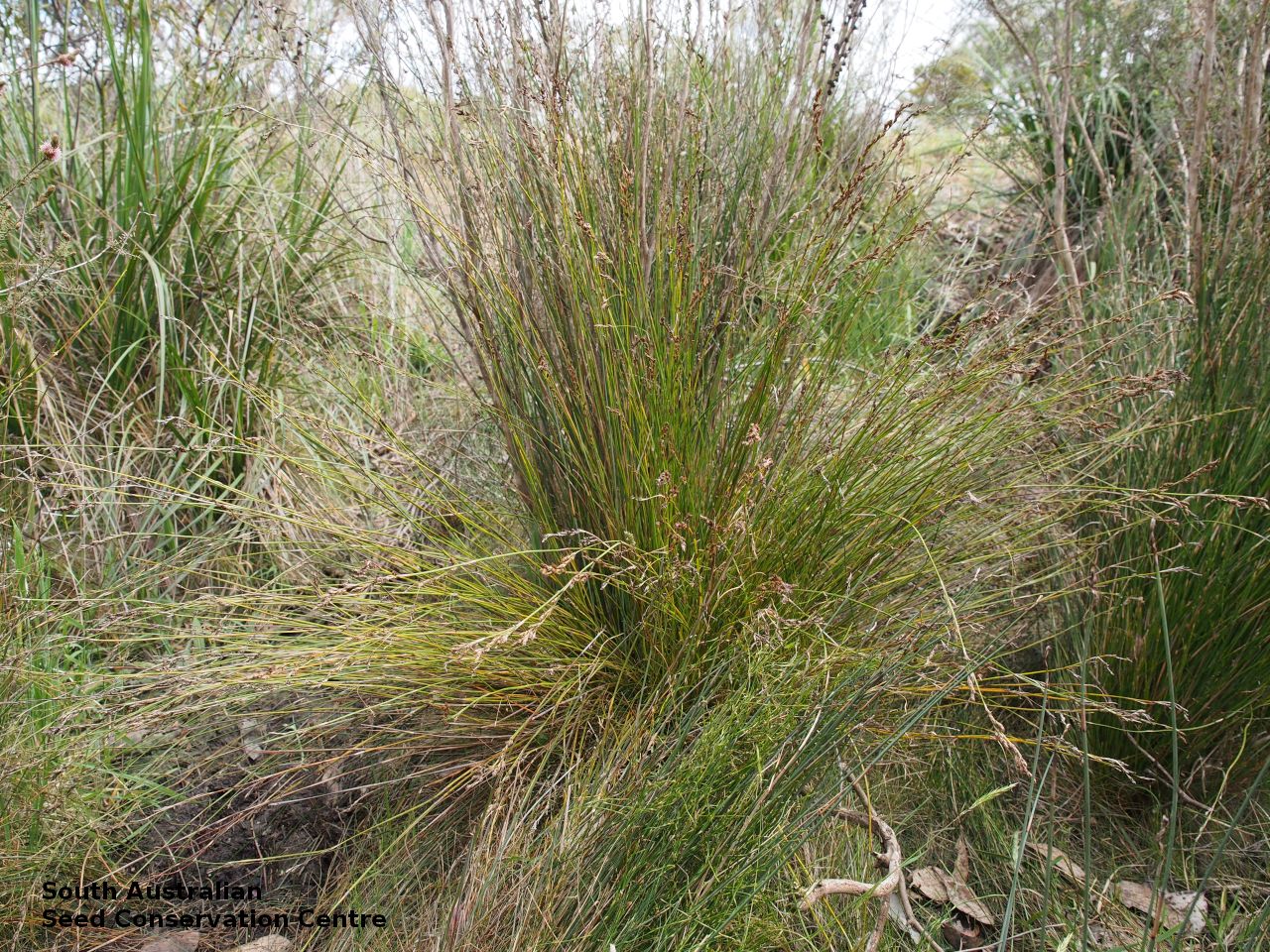
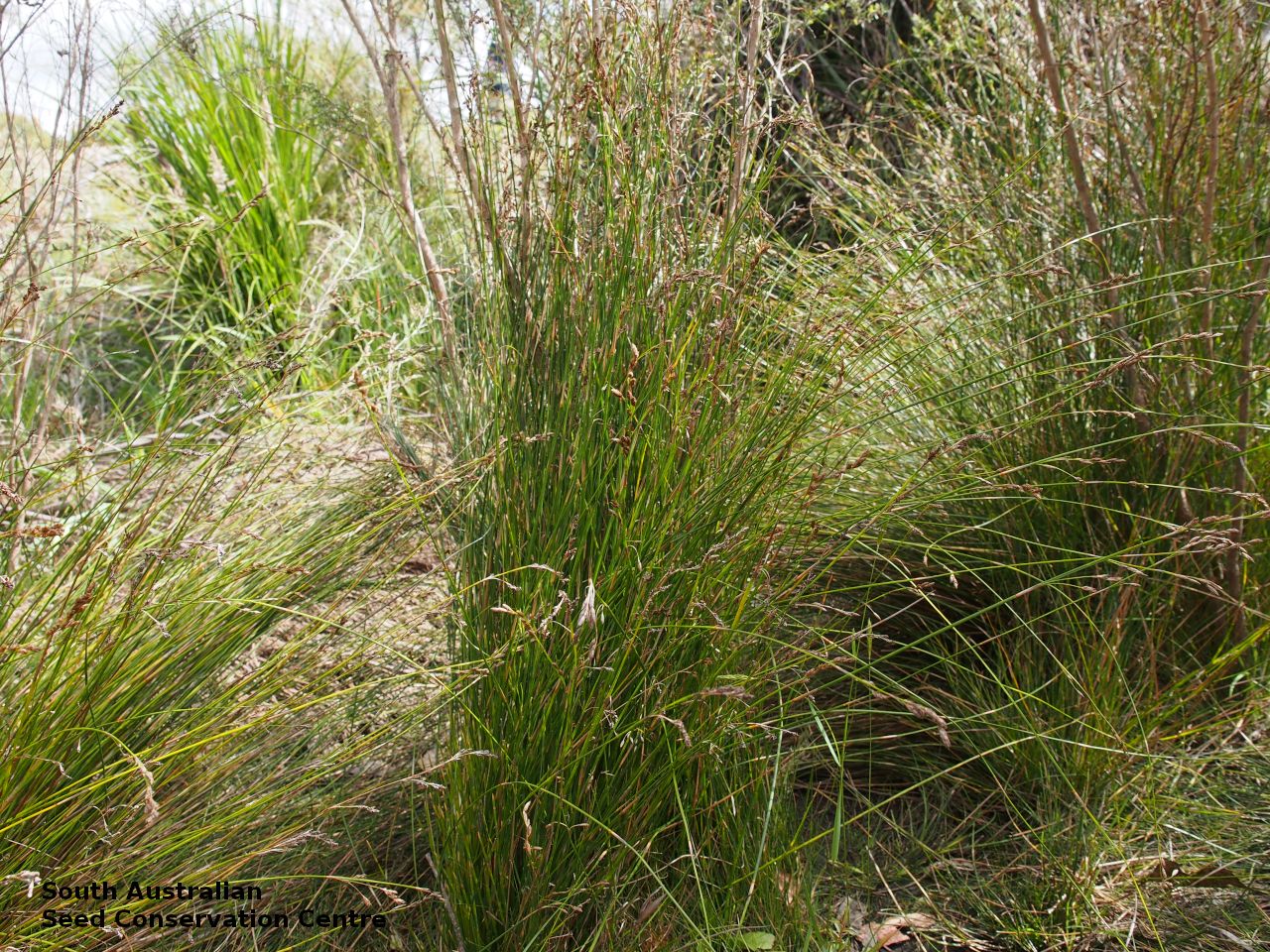
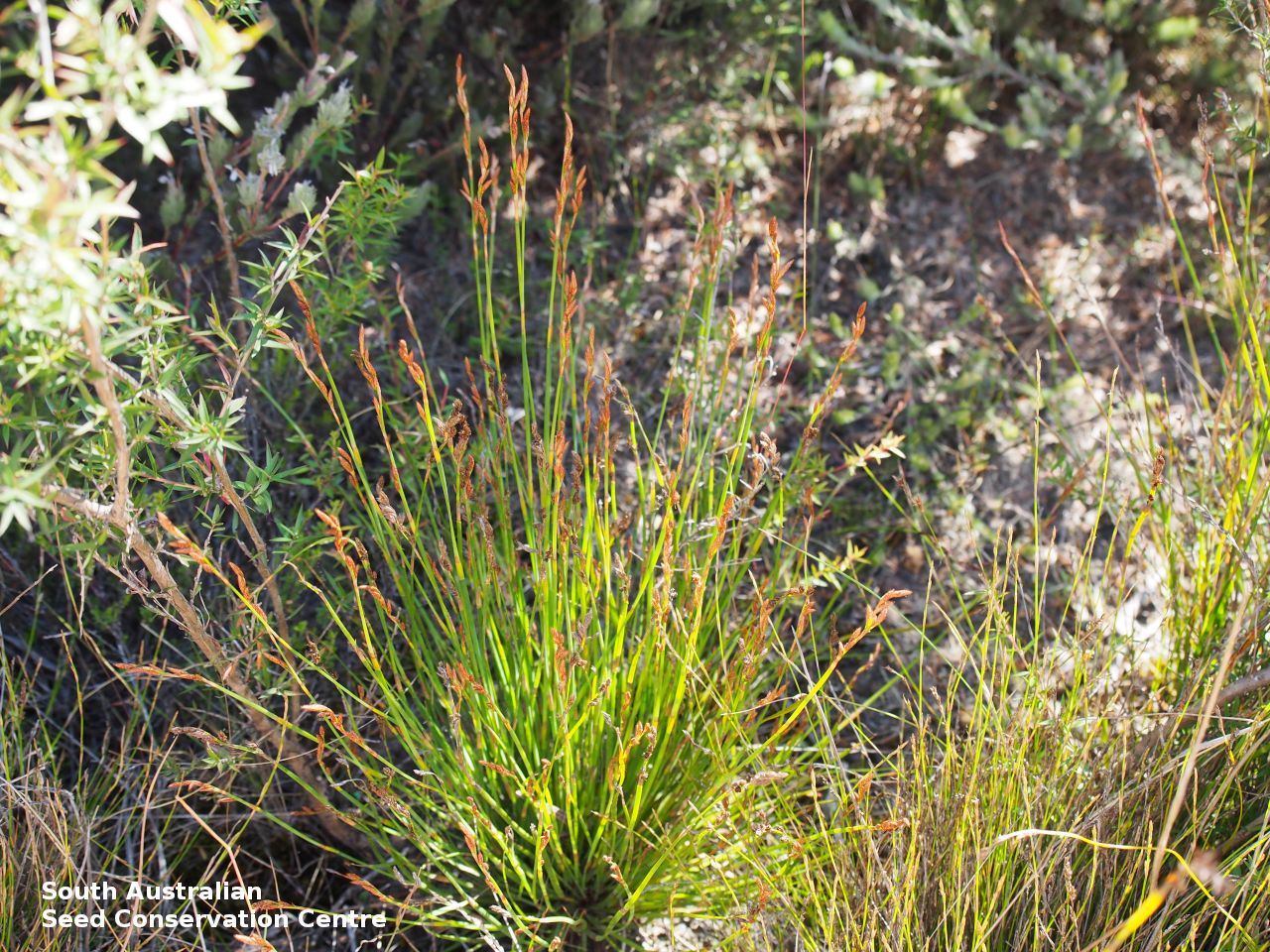
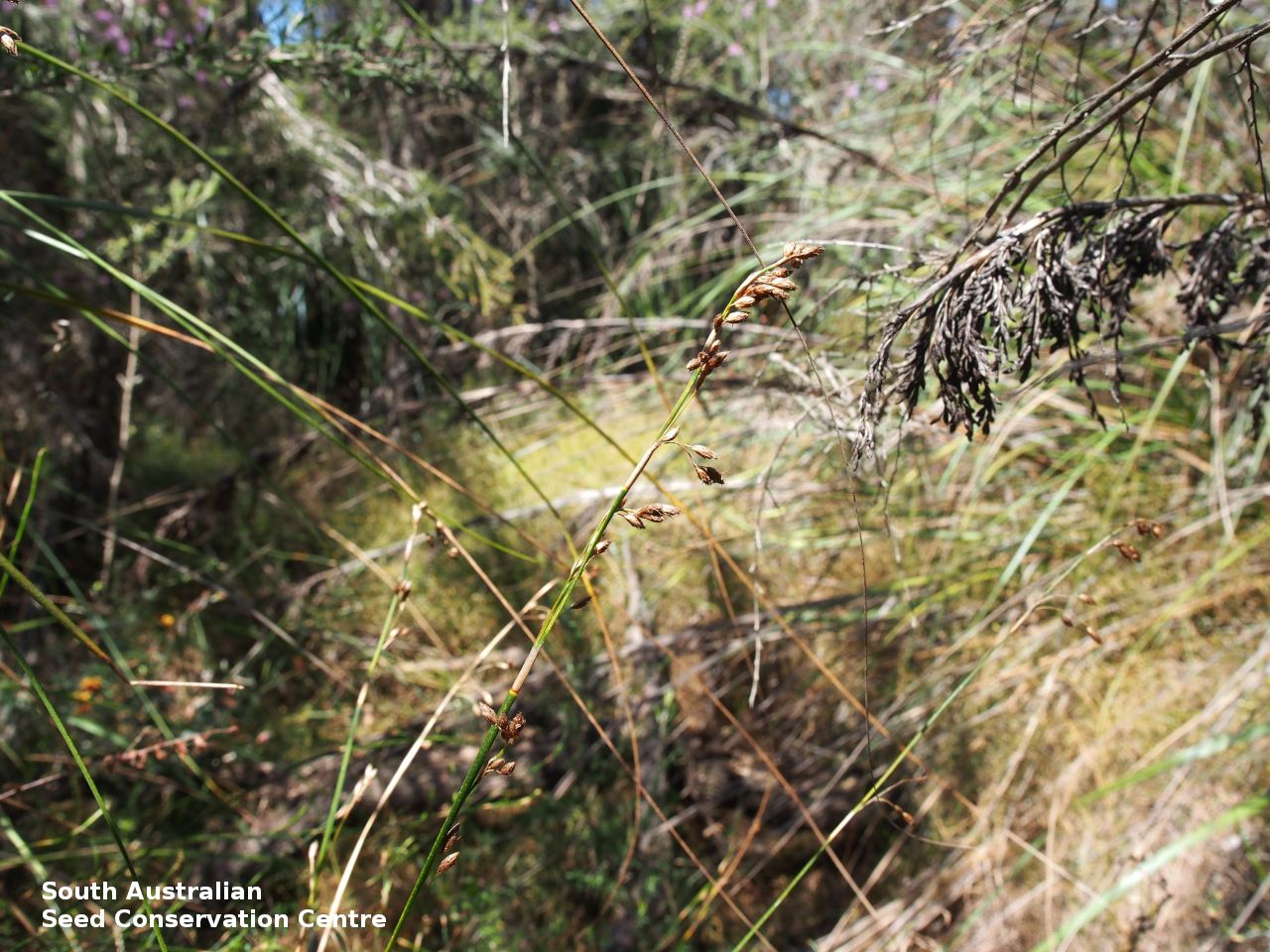
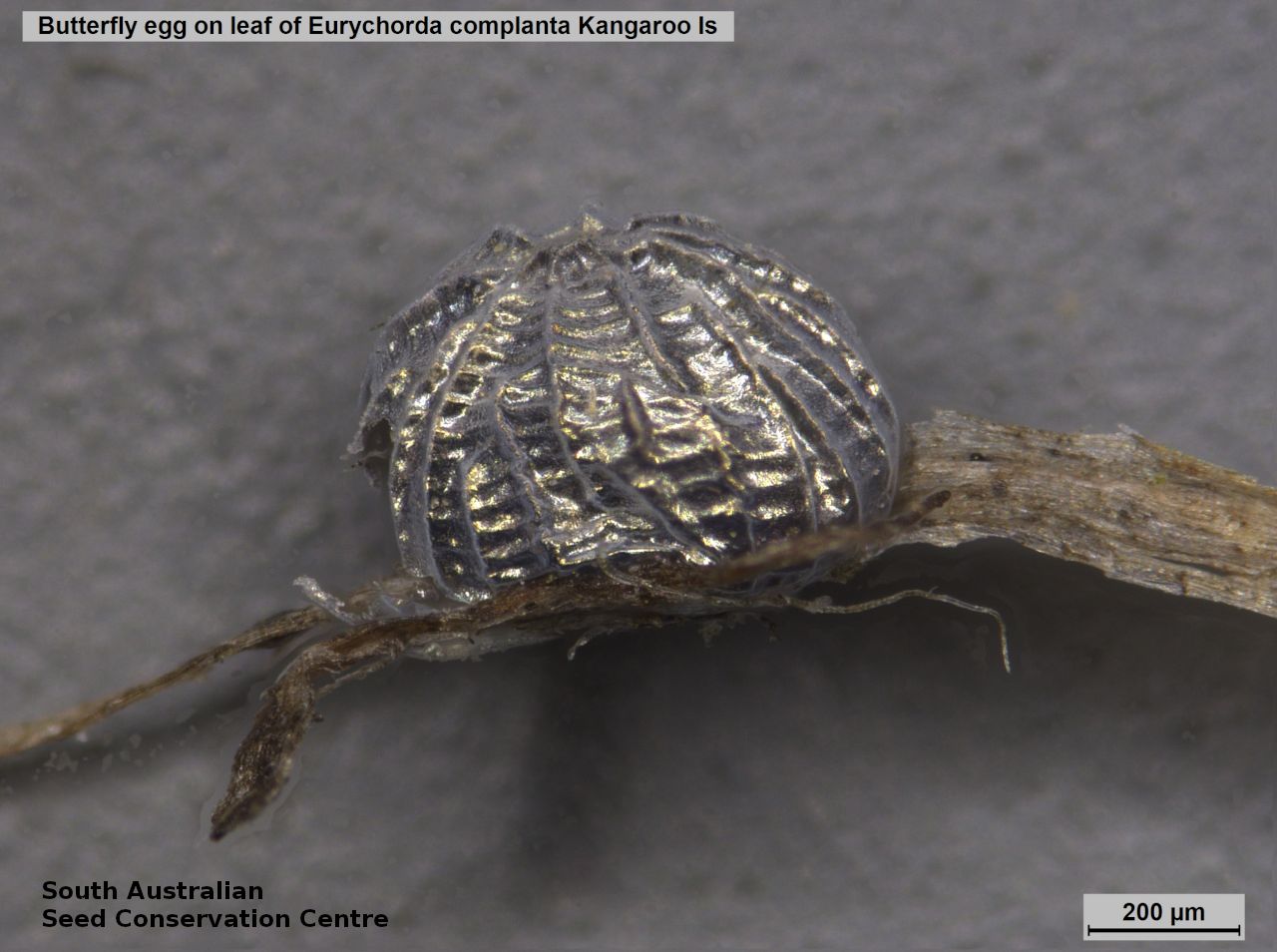

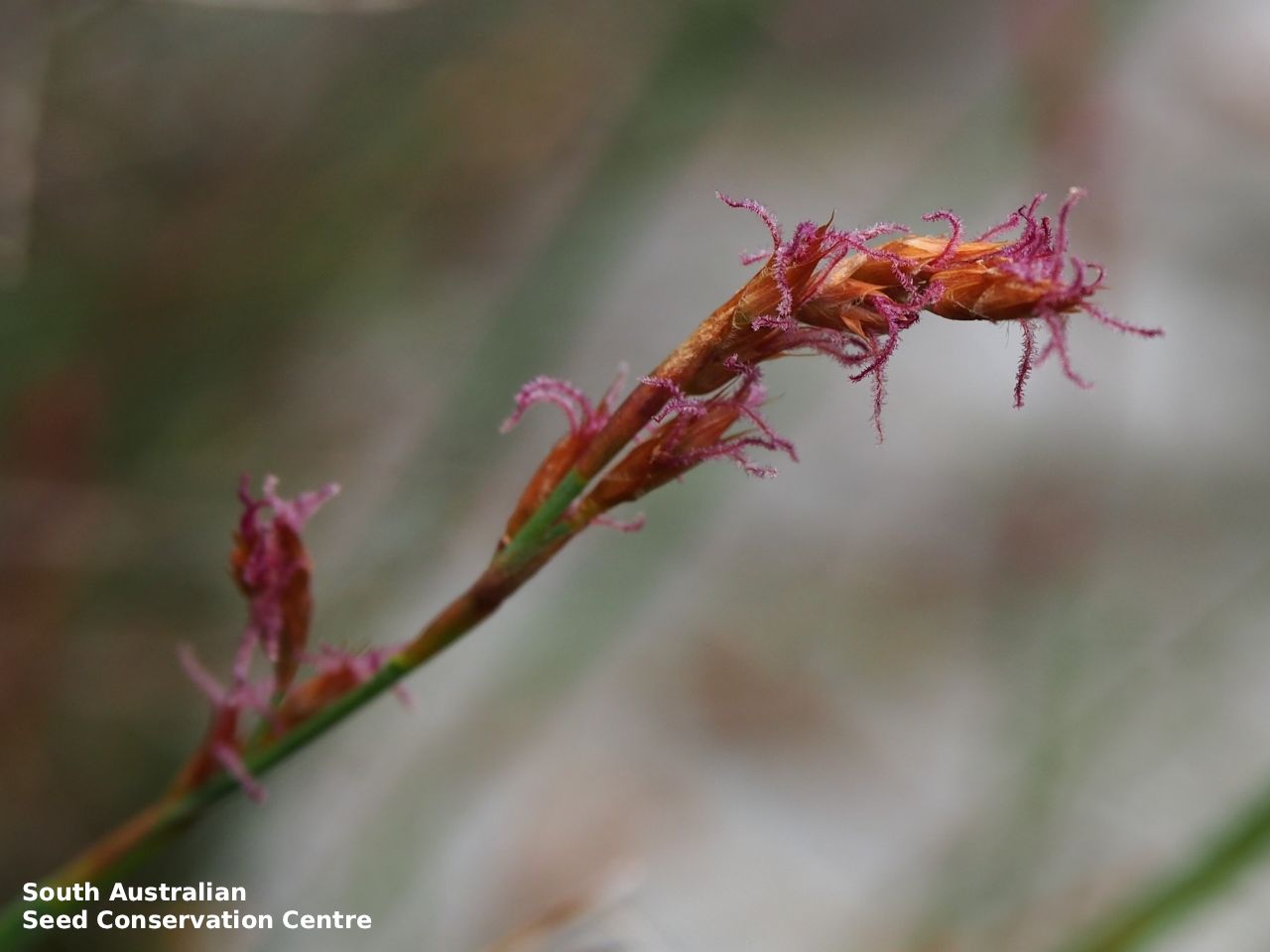
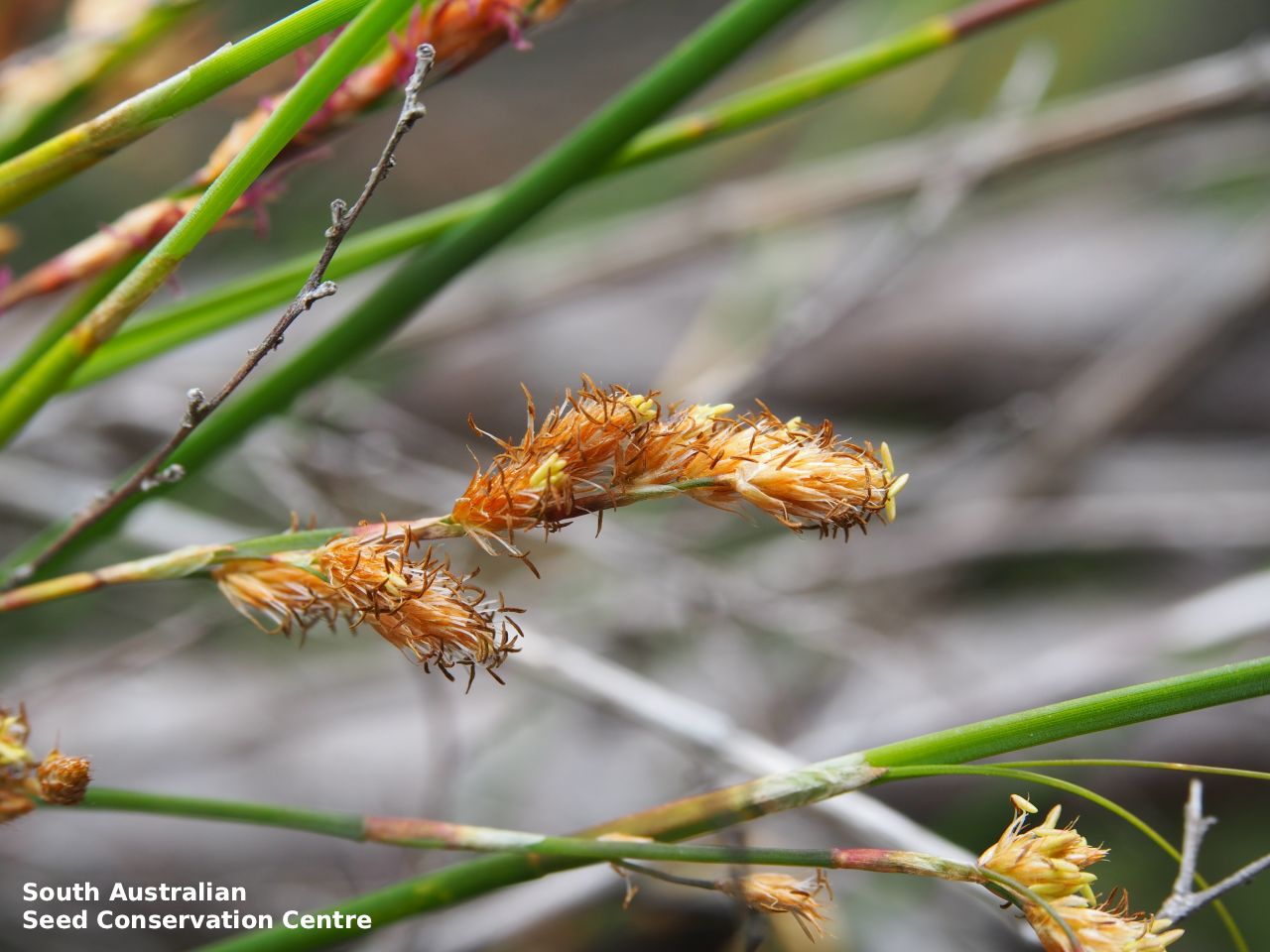
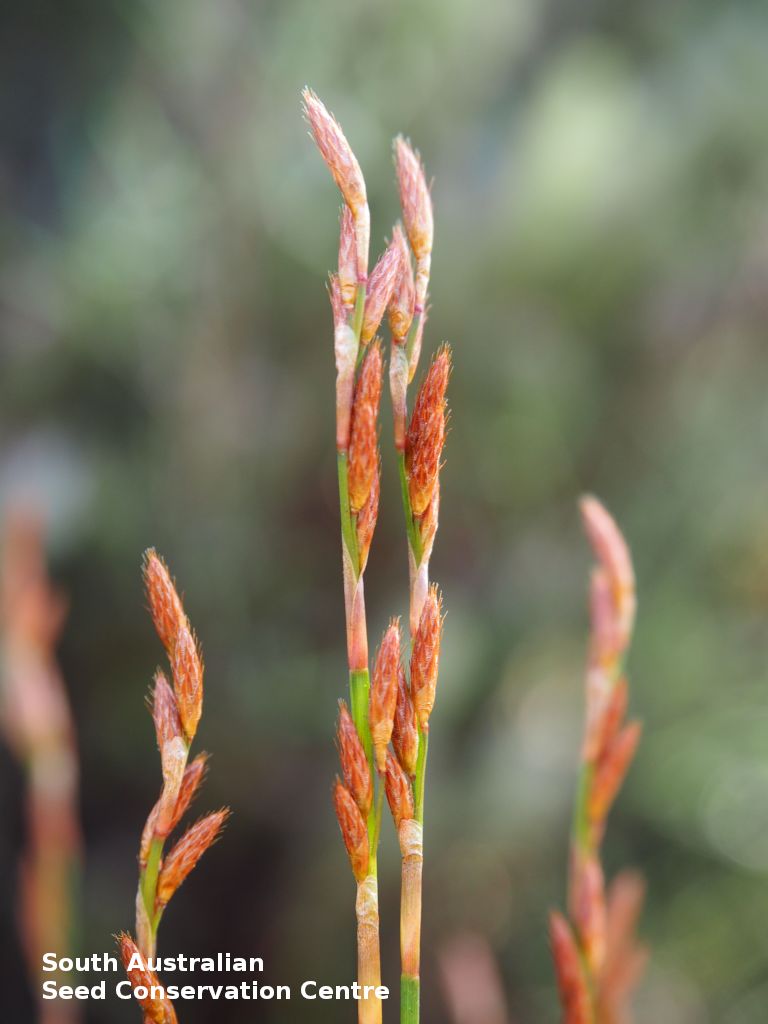
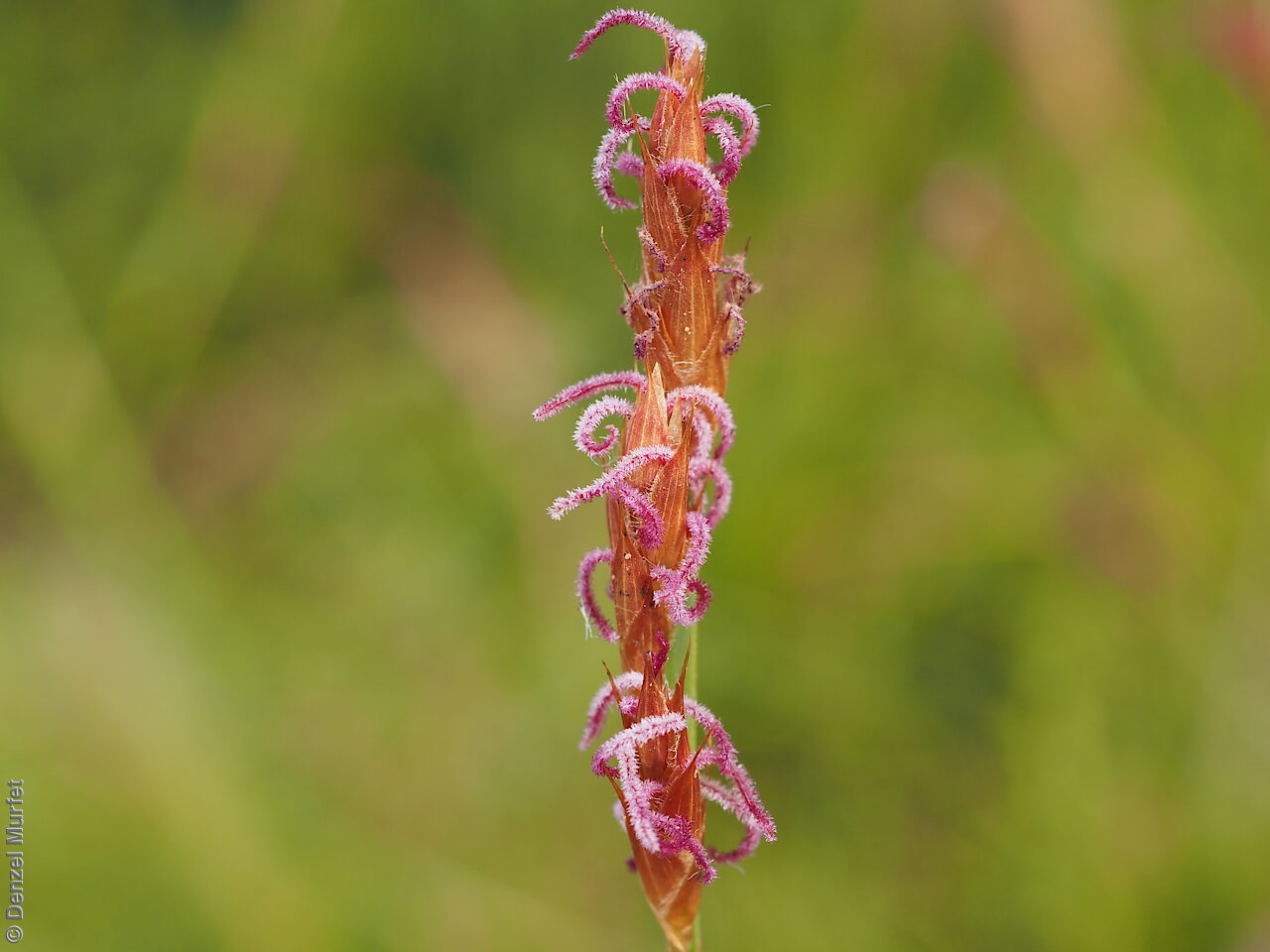
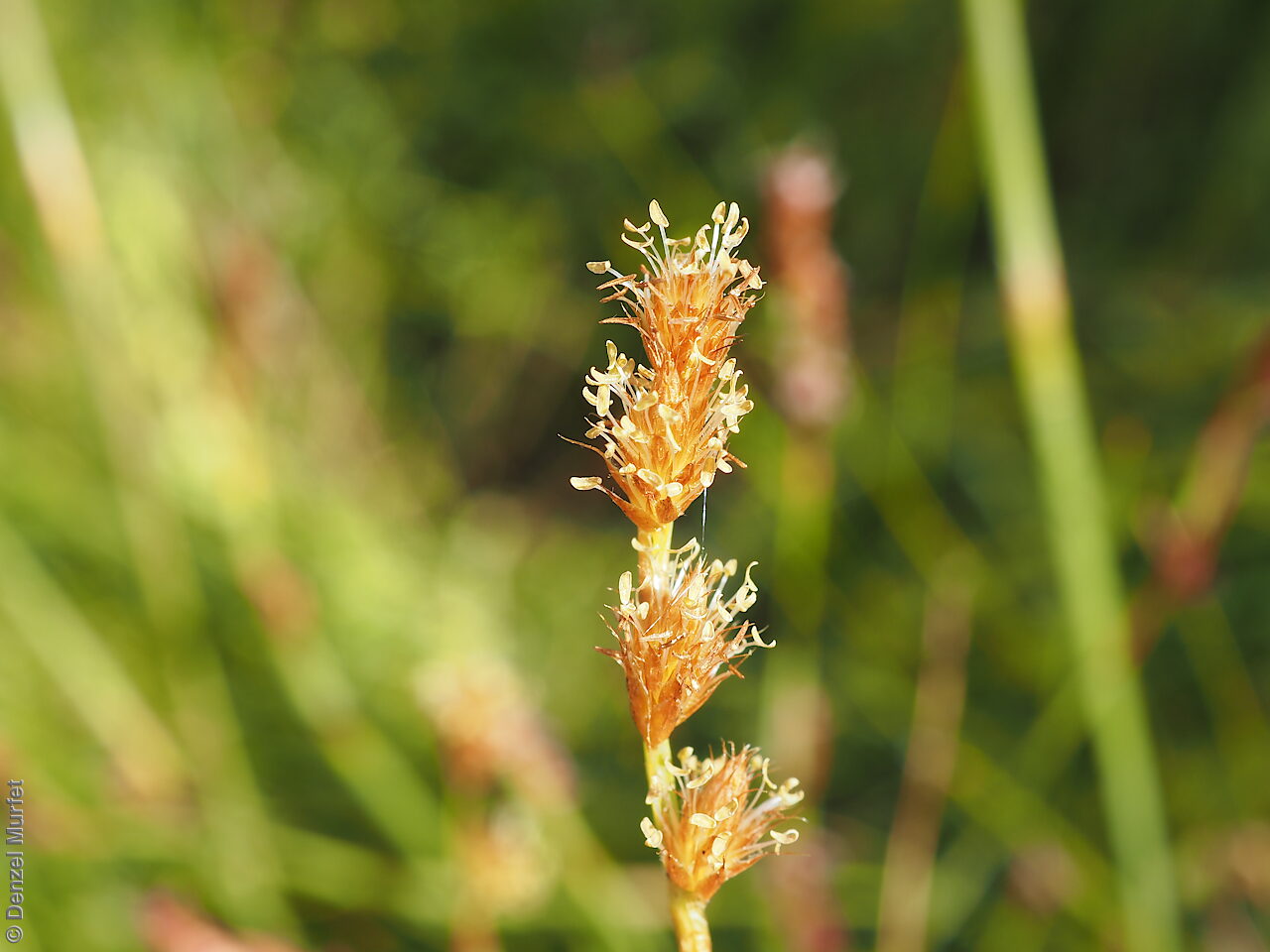
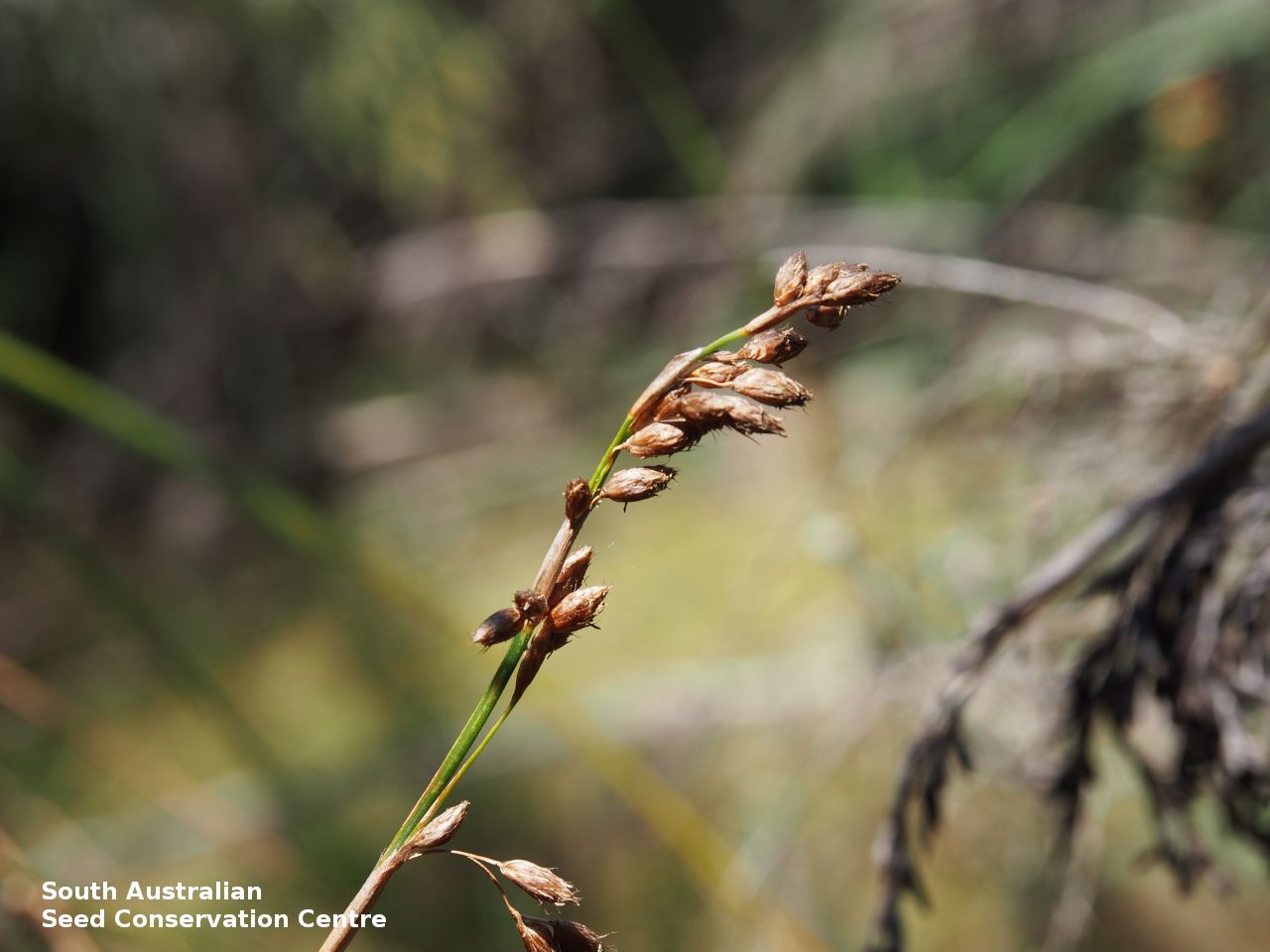
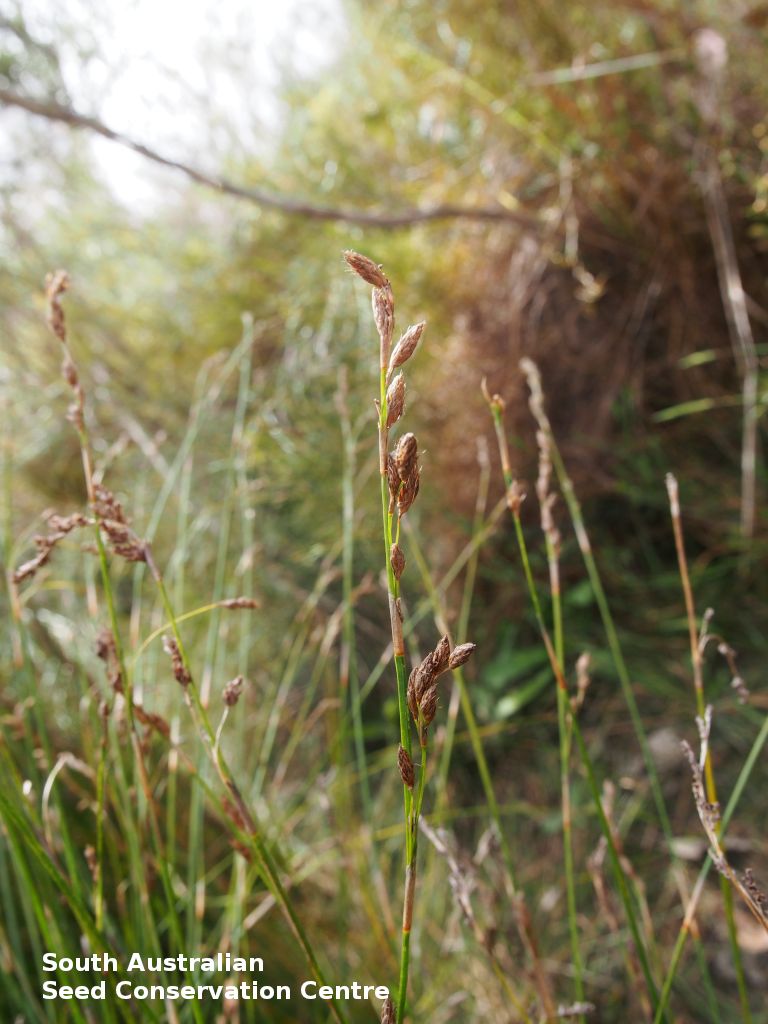
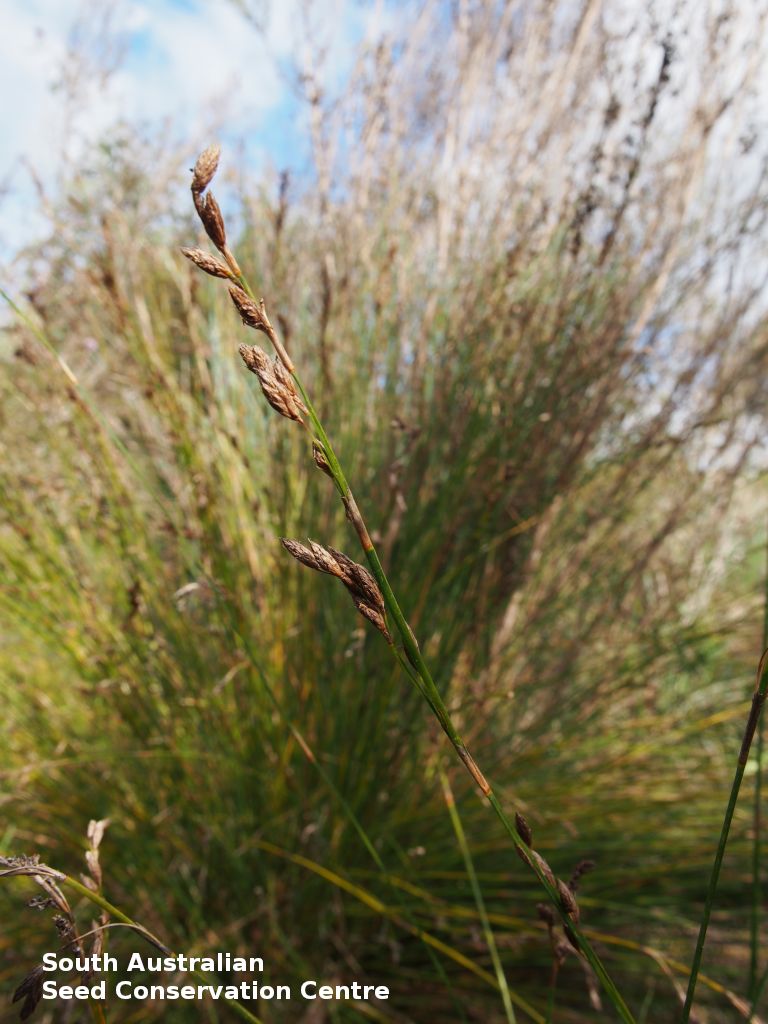
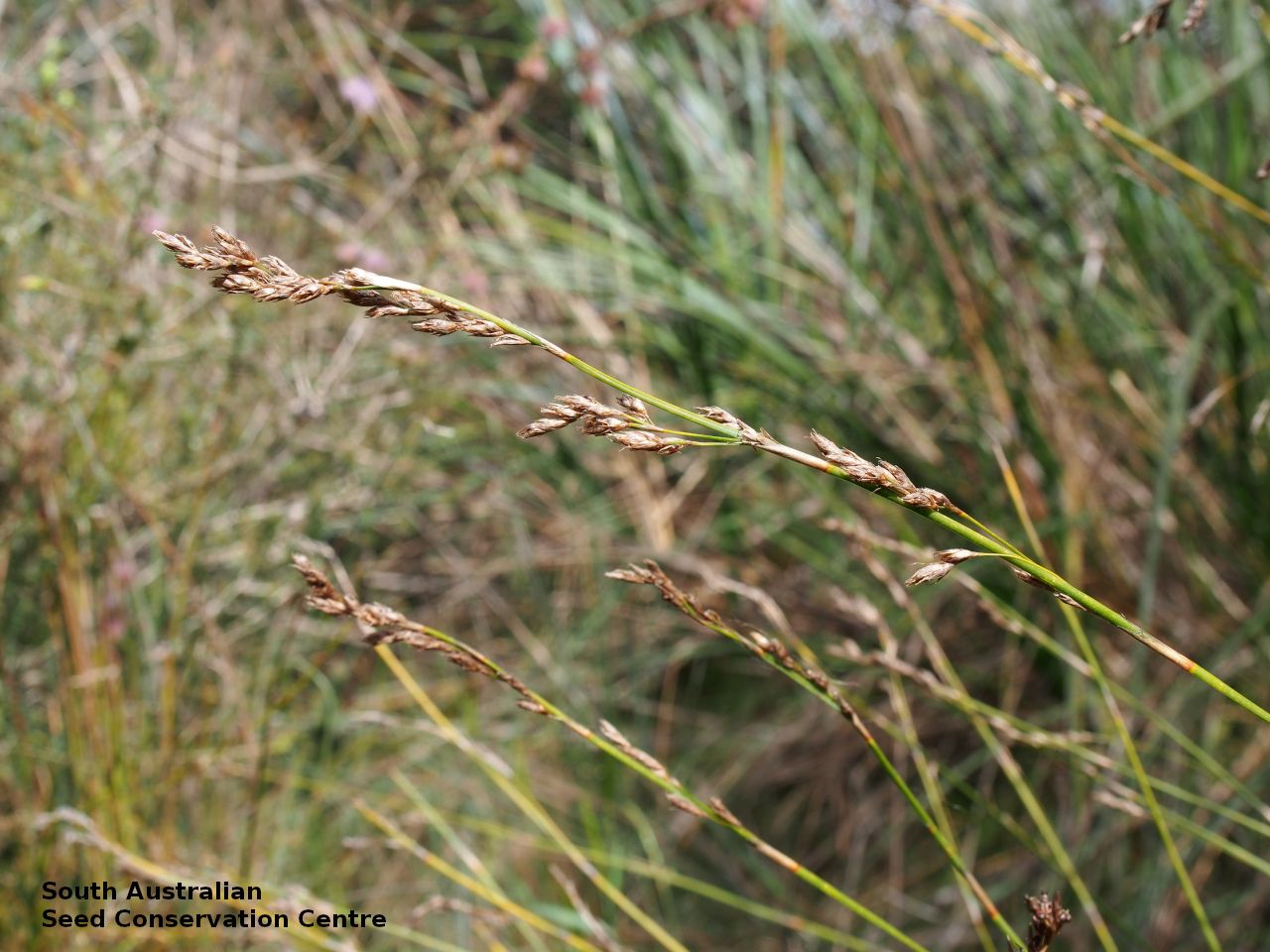
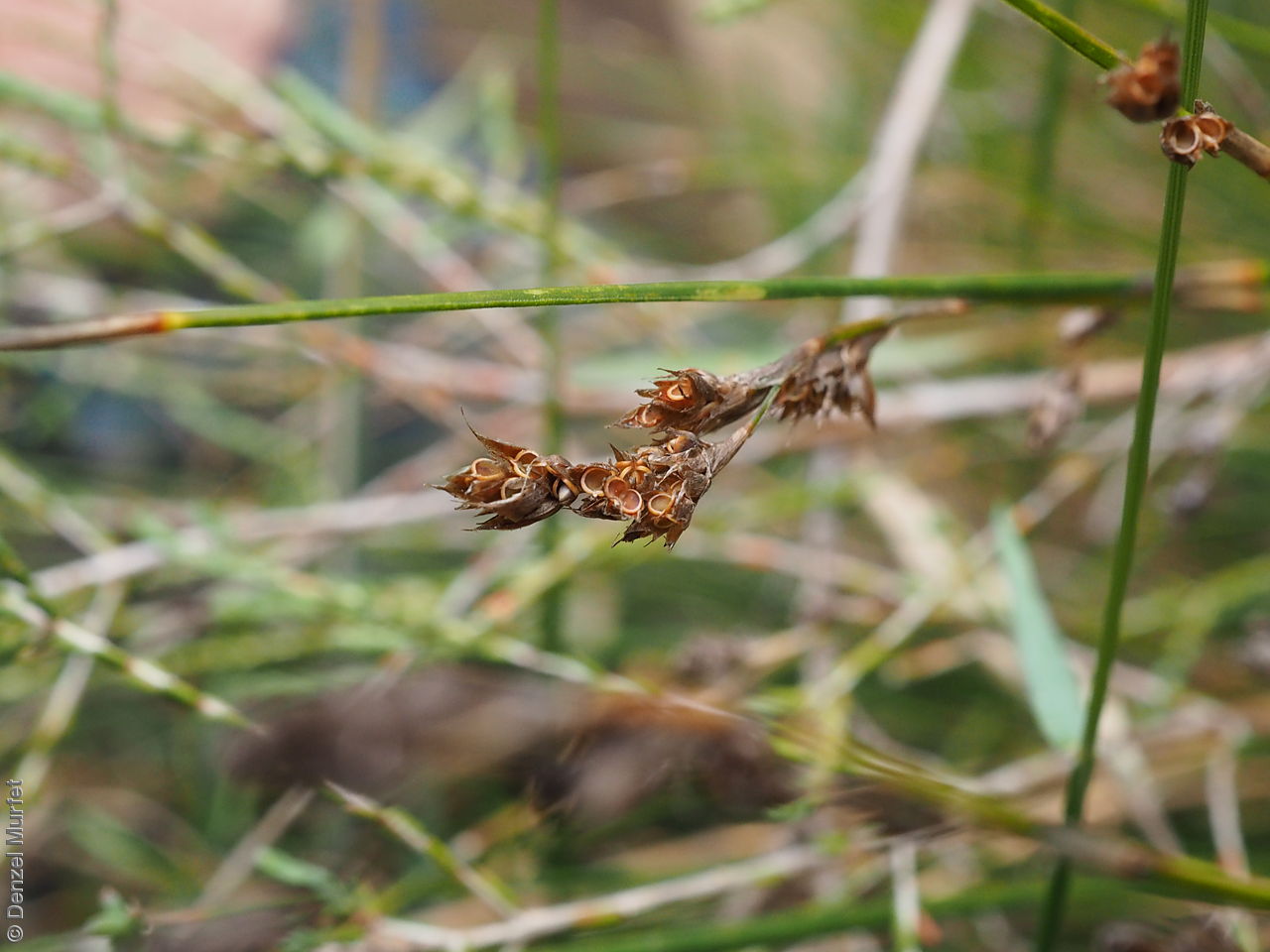
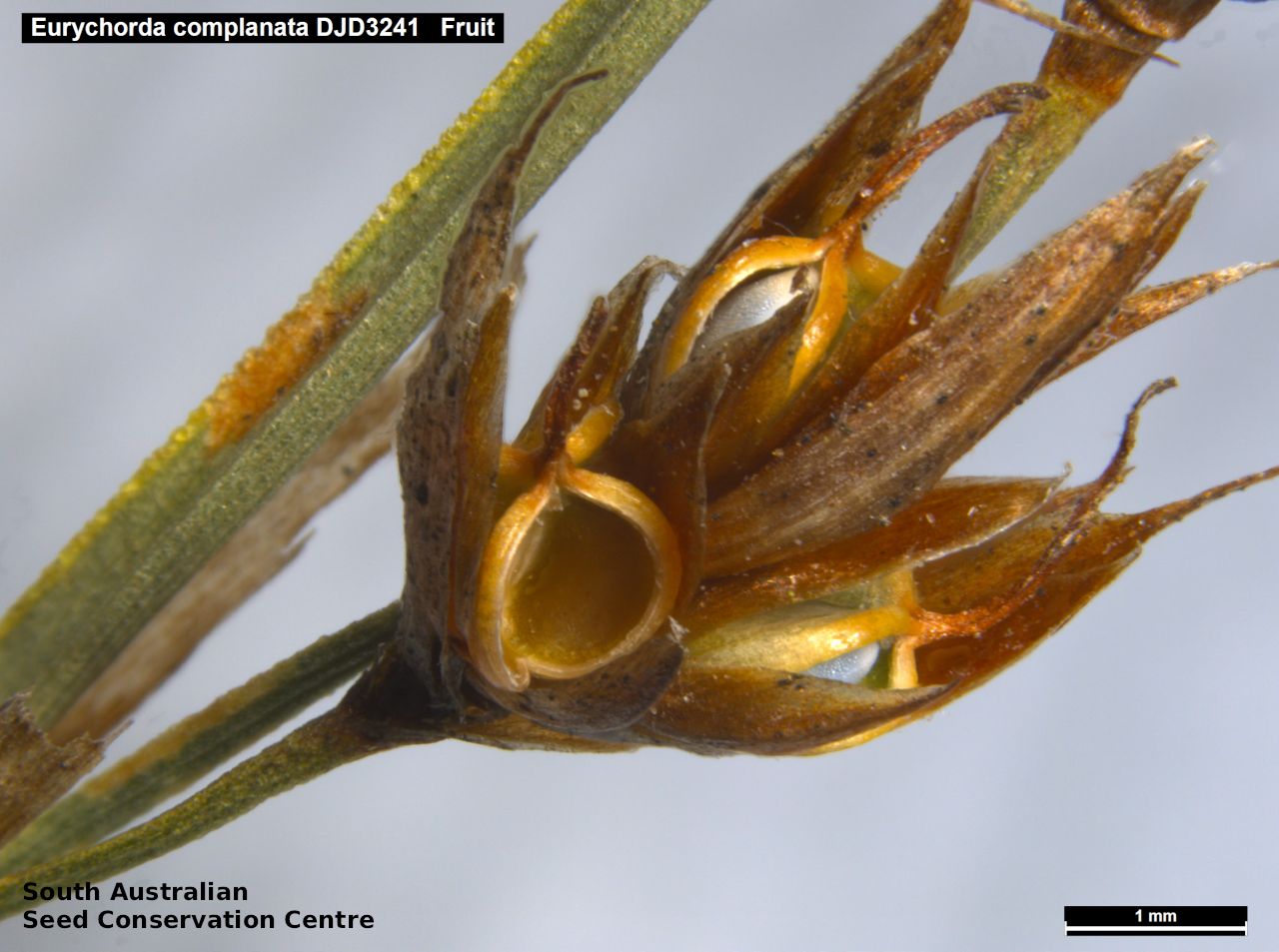
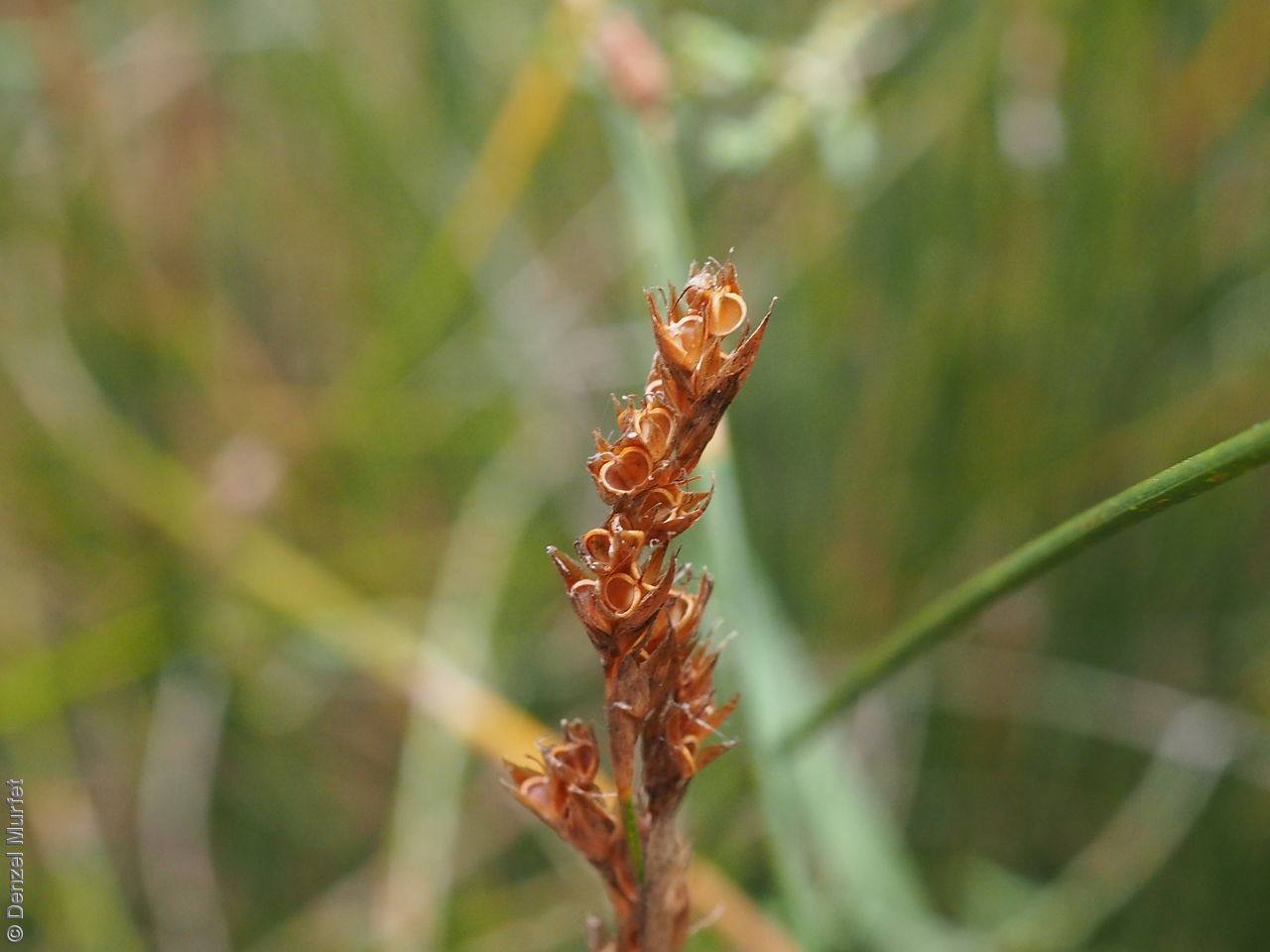
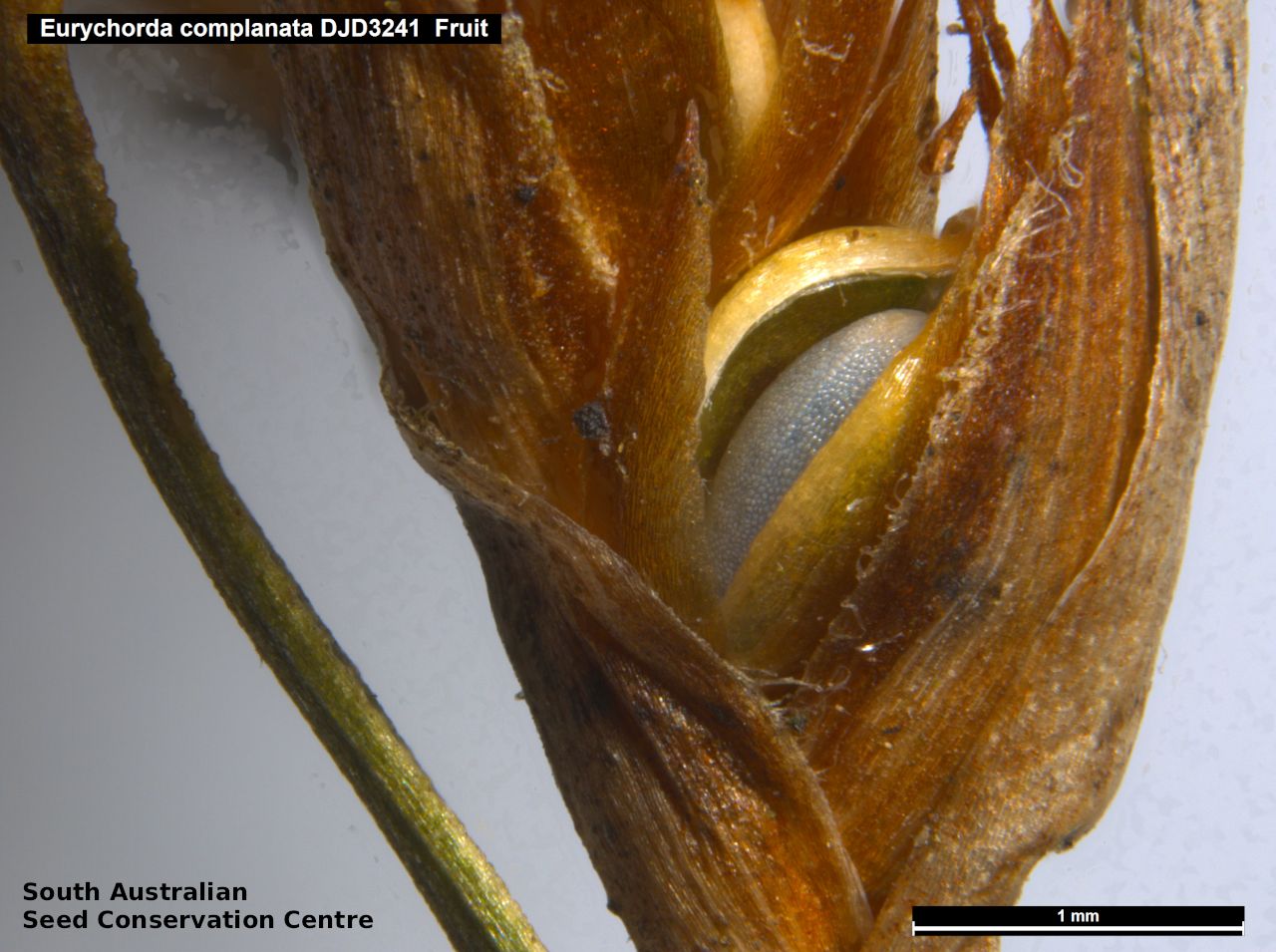
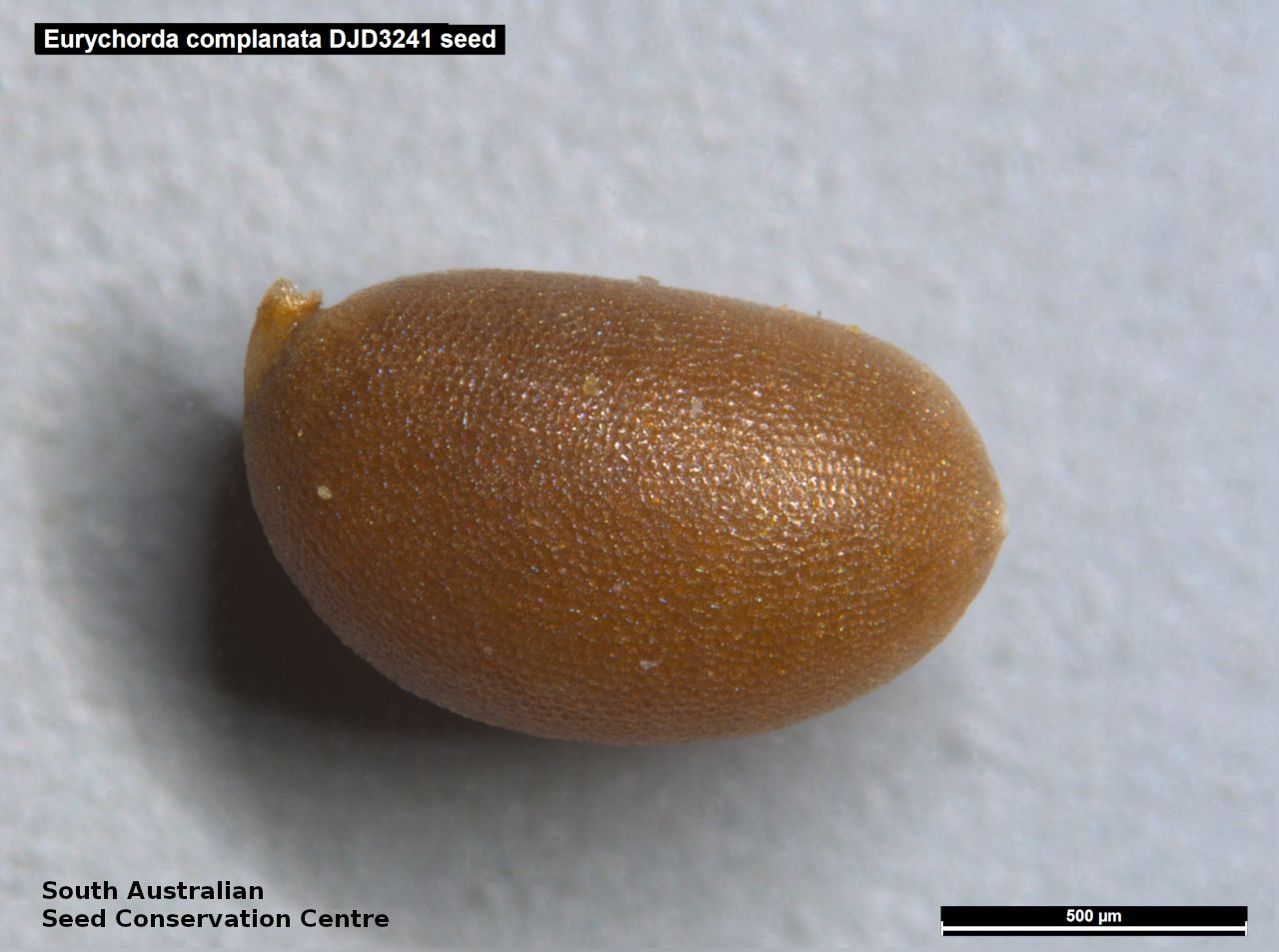
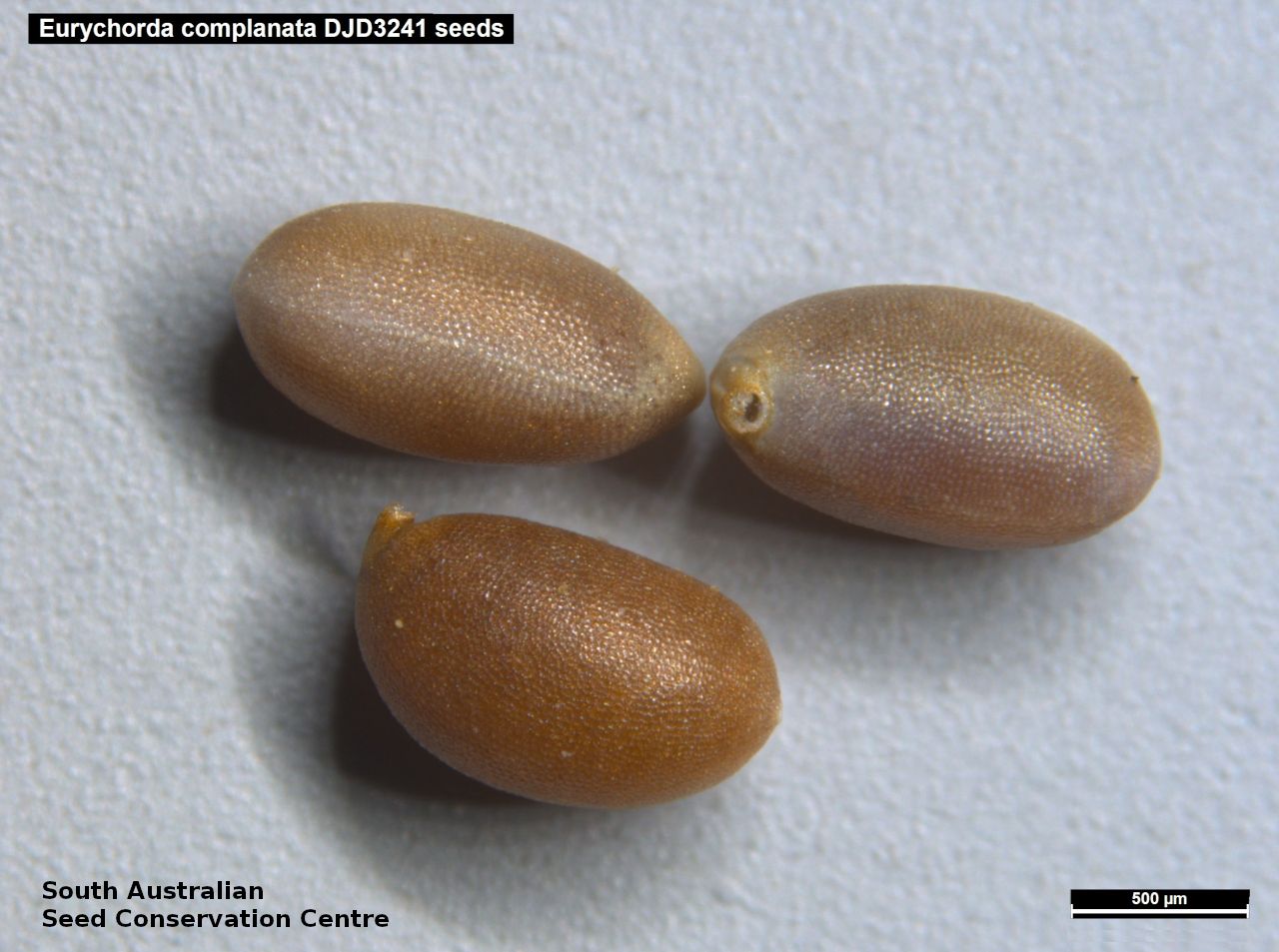
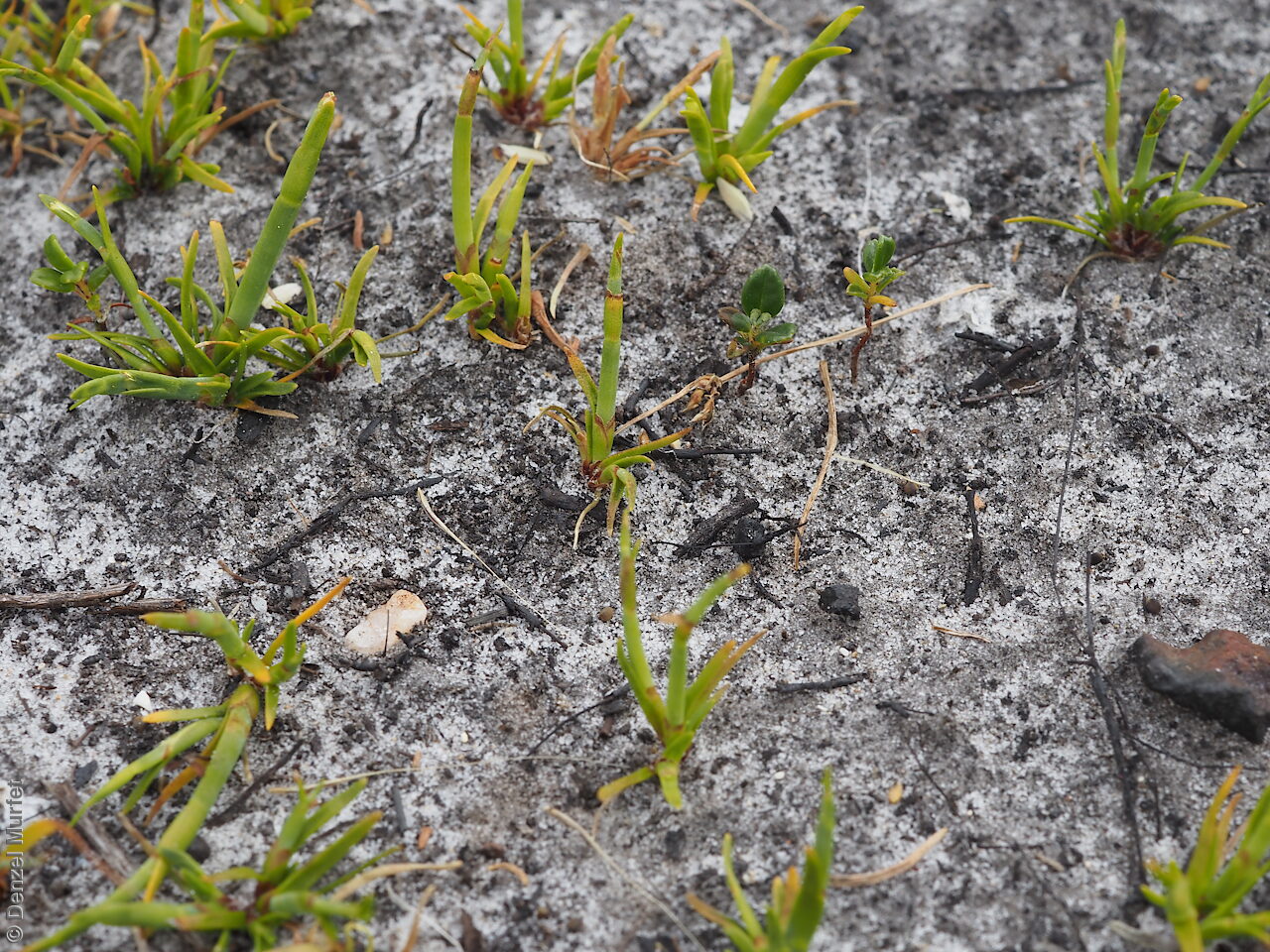
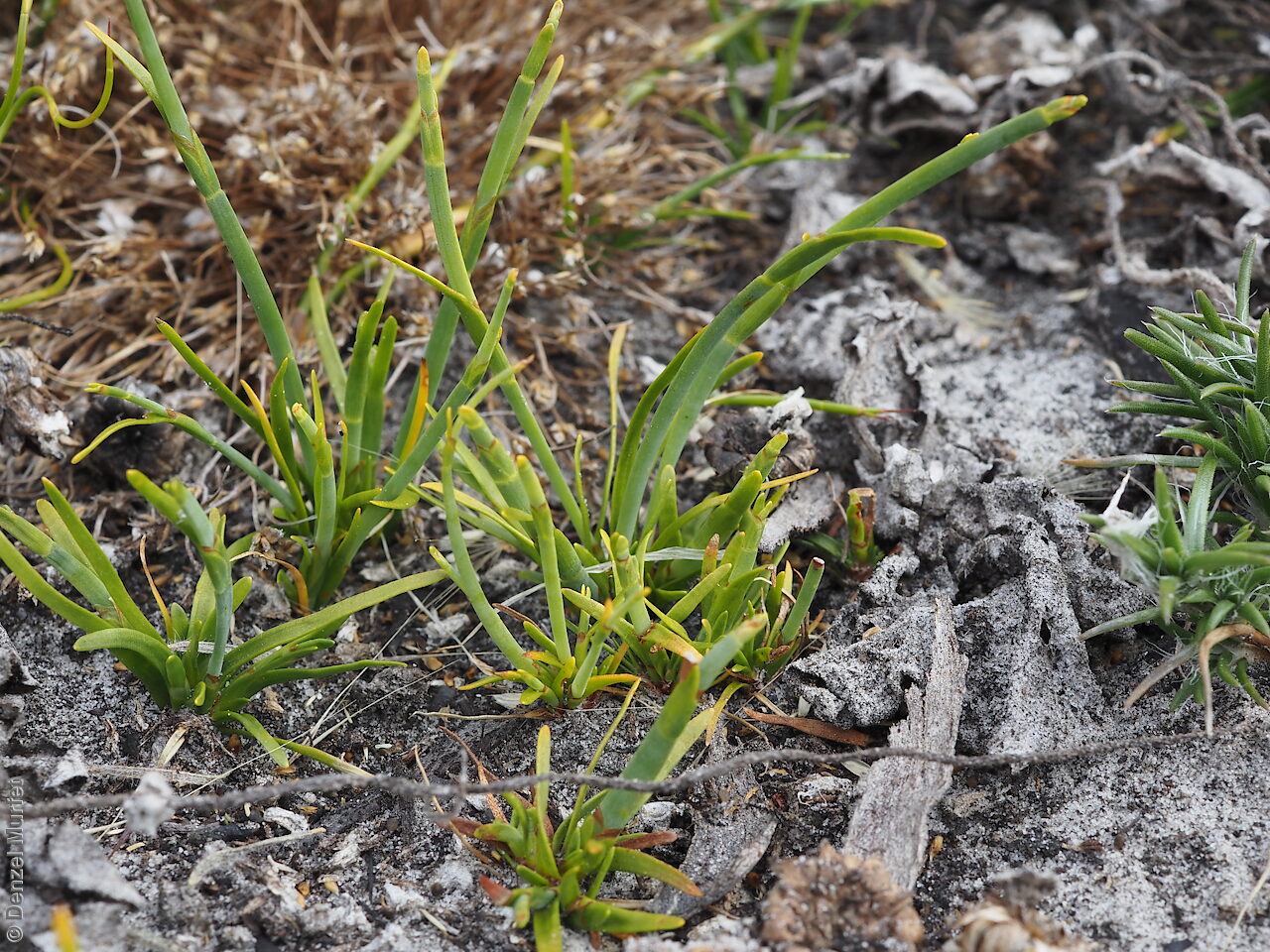

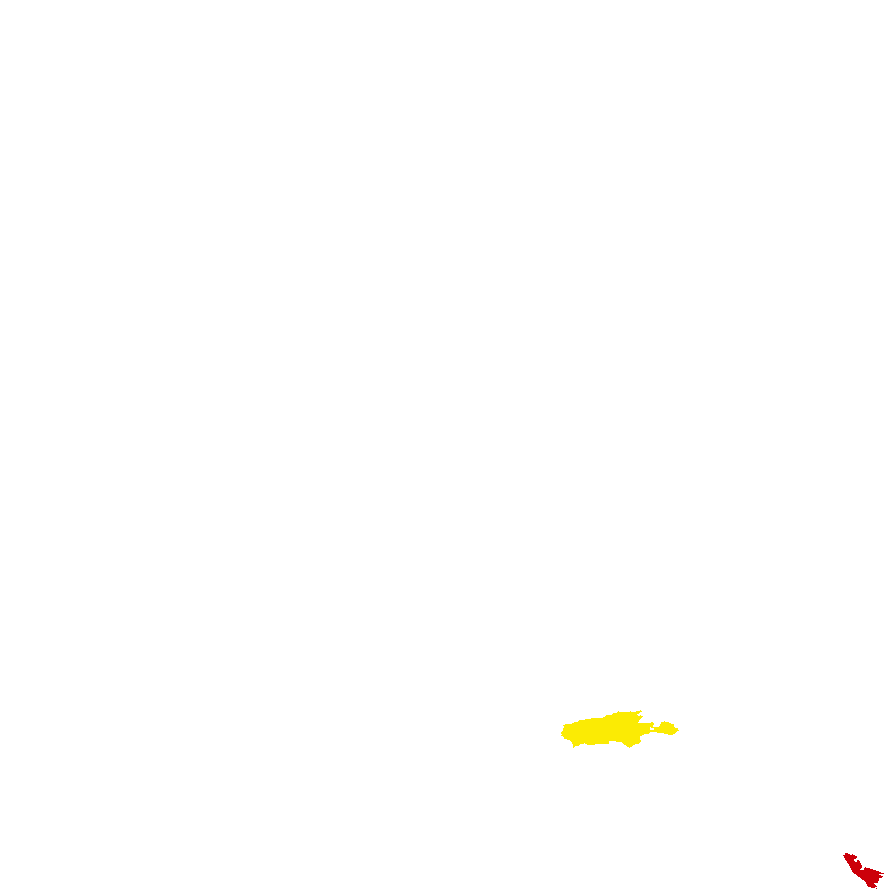
Botanical art
Prior names
Restio complanatus
Common names
Flat Cord-rush
Etymology
Eurychorda possible from the Greek 'eury' meaning broad and 'khorde' meaning chord or sting, referring to the string-like stems or that the stems were used as string. Complanata means flattened, referring to the flattened stems.
Distribution and status
Currently known only from the western side of Kangaroo Island in South Australia, with an old record from the lower South-east, growing on the edge of creeks in damp heath. Also found in Queensland, New South Wales, Victoria and Tasmania. Native. Very rare in South Australia. Common in the other States.
Herbarium regions: Kangaroo Island, South Eastern
AVH map: SA distribution map (external link)
Plant description
Soft drooping perennial sedge with flattened, glabrous stems to 100 cm long. Leaves reduced to small scales at the base of the culms. The flat, wiry culms have small drooping branchlets of male and female flowers. Flowering between October to February. Fruits are brown spike at the tip of stems. Seeds are tiny brown ellipsoid seed to 1.2 mm long and 0.8 mm wide, with a fine reticulated surface. Seed embryo type is broad.
Seed collection and propagation
Collect seeds between November and April. Collection mature heads, those turning brown. Either cut the whole heads or strip the fruit from the heads with your hands. Place the heads in a tray and leave to dry for one to two weeks. Then rub the heads with a rubber bung to dislodge the seeds. Use a sieve to separate any unwanted material. Store the seeds with a desiccant such as dried silica beads or dry rice, in an air tight container in a cool and dry place.
Fire Response
Obligate re-sprouter and re-seeder. Seedlings observed as well as basal resprouting from adult plants that were not completely burnt.
Longevity: >20 years
Time to flowering: 4 to 5 years
Recovery Work
In 2020-2021 this species was assessed post-fire in 1 year and 2 year old fire scars. Further populations will be assessed and seeds collected on Kangaroo Island in 2021–2022. Germination screening testing the response to fire cues will be undertaken in 2021.This project was supported by the Project Phoenix program.
| Location | No. of seeds (weight grams) | Number of plants | Date collected | Collection number Collection location | Date stored | % Viability | Storage temperature |
|---|---|---|---|---|---|---|---|
| BGA | 600 (0.4268 g) | 5 | 4-May-2006 | DJD481 Kangaroo Island | 8-Aug-2006 | 55% | -18°C |
| BGA | 820 (0.34 g) | 6 | 15-Nov-2006 | TST95 Kangaroo Island | 1-Aug-2007 | 100% | -18°C |
| BGA | 8,000 (4.06 g) | 5 | 13-Dec-2016 | DJD3241 Kangaroo Island | 28-Jun-2021 | 100% | +5°C, -18°C, -80°C |
| BGA | 12,400 (4.379 g) | 4 | 3-Nov-2022 | TST1503 Kangaroo Island | 20-Jun-2023 | 100% | -18°C, -80°C |
Number of plants: This is the number of plants from which the seeds were collected.
Collection location: The Herbarium of South Australia's region name.
% Viability: Percentage of filled healthy seeds determined by a cut test or x-ray.